[/caption]
NASA’s huge Curiosity Mars Science Lab (MSL) rover is carrying a vintage Lincoln penny along for the long interplanetary journey to Mars – and it’s not to open the first Martian savings account.
Scientists will use the century old Lincoln penny – minted back in 1909 – as a modern age calibration target for one of Curiosity’s five powerful science cameras attached to the end of the hefty, 7 foot (2.1 meter) long robotic arm.
The car sized rover is on course to touchdown at the foothills of a towering and layered mountain inside Gale Crater in just 161 days on Aug. 6, 2012.
So far Curiosity has traveled 244 million kilometers since blasting off on Nov. 26, 2011 from Florida and has another 322 million kilometers to go to the Red Planet.
The copper penny is bundled to a shoulder joint on the rovers arm along with the other elements of the calibration target, including color chips, a metric standardized bar graphic, and a stair-step pattern for depth calibration.
The whole target is about the size of a smart phone and looks a lot like an eye vision chart in an ophthalmologist’s office. And it serves a similar purpose, which will be to check the performance of Curiosity eyes – specifically the Mars Hand Lens Imager (MAHLI) camera located at the terminus of the robotic arm.
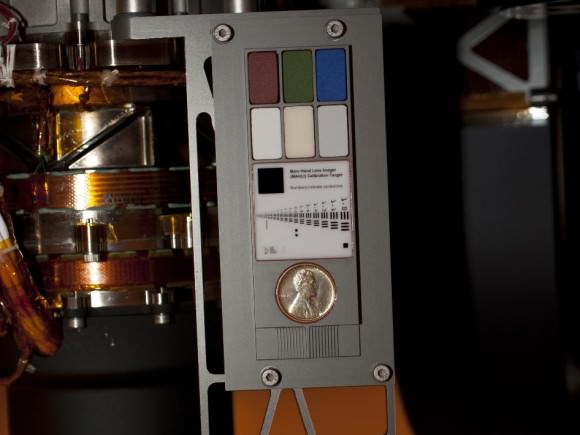
Two instruments at the end of the robotic arm on NASA's Mars rover Curiosity will use calibration targets attached to a shoulder joint of the arm. Credit: NASA/JPL-Caltech
MAHLI will conduct close-up inspections of Martian rocks and soil. It can show tiny details, finer than a human hair.
The term “hand lens” in MAHLI’s name refers to the standard practice by field geologists’ of carrying a hand lens during expeditions for close up, magnified inspection of rocks they find along the way. So it’s also critical to pack various means of calibration so that researchers can interpret their results and put them into proper perspective.
MAHLI can also focus on targets over a wide range of distances near and far, from about a finger’s-width away out to the Red Planets horizon, which in this case means the mountains and rim of the breathtaking Gale Crater landing site.
“When a geologist takes pictures of rock outcrops she is studying, she wants an object of known scale in the photographs,” said MAHLI Principal Investigator Ken Edgett, of Malin Space Science Systems, San Diego, which supplied the camera to NASA.
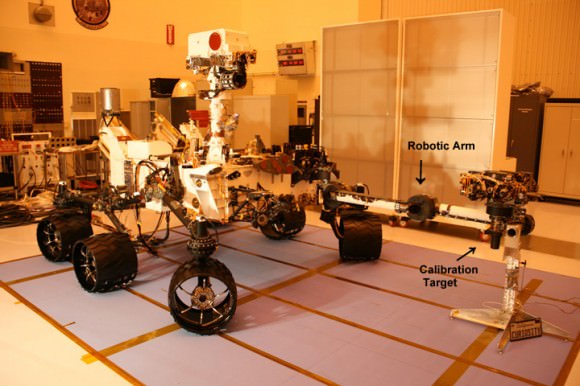
Curiosity with robotic arm extended. Calibration target is located at a shoulder joint on the arm. Photo taken just before encapsulation for 8 month long interplanetary Martian Journey and touchdown inside Gale Crater. Credit: Ken Kremer
The target features a collection of marked black bars in a wide range of labeled sizes to correlate calibration images to each image taken by Curiosity.
“If it is a whole cliff face, she’ll ask a person to stand in the shot. If it is a view from a meter or so away, she might use a rock hammer. If it is a close-up, as the MAHLI can take, she might pull something small out of her pocket. Like a penny.”
Edgett donated the special Lincoln penny with funds from his own pocket. The 1909 “VDB” cent stems from the very first year that Lincoln pennies were minted and also marks the centennial of President Abraham Lincoln’s birth. The VDB initials of the coin’s designer – Victor David Brenner — are on the reverse side. In mint condition the 1909 Lincoln VDB copper penny has a value of about $20.
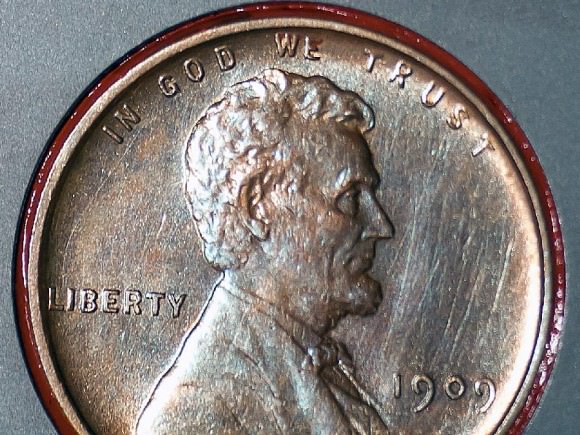
“The penny is on the MAHLI calibration target as a tip of the hat to geologists’ informal practice of placing a coin or other object of known scale in their photographs. A more formal practice is to use an object with scale marked in millimeters, centimeters or meters,” Edgett said. “Of course, this penny can’t be moved around and placed in MAHLI images; it stays affixed to the rover.”
“Everyone in the United States can recognize the penny and immediately know how big it is, and can compare that with the rover hardware and Mars materials in the same image,” Edgett said.
“The public can watch for changes in the penny over the long term on Mars. Will it change color? Will it corrode? Will it get pitted by windblown sand?”
MAHLI’s calibration target also features a display of six patches of pigmented silicone to assist in interpreting color and brightness in the images. Five of them are leftovers from Spirit and Opportunity. The sixth has a fluorescent pigment that glows red when exposed to ultraviolet light, allows checking of an ultraviolet light source on MAHLI. The fluorescent material was donated to the MAHLI team by Spectra Systems, Inc., Providence, R.I.
Three-dimensional calibration of the MSL images will be done using the penny and a stair-stepped area at the bottom of the target.
“The importance of calibration is to allow data acquired on Mars to be compared reliably to data acquired on Earth,” said Mars Science Laboratory Project Scientist John Grotzinger, of the California Institute of Technology, Pasadena.
Curiosity is a 1 ton (900 kg) behemoth. She measures 3 meters (10 ft) in length and is nearly twice the size and five times as heavy as Spirit and Opportunity, NASA’s prior set of twin Martian robots. The science payload is 15 times heavier than the twin robots.
Curiosity is packed to the gills with 10 state of the art science instruments that are seeking the signs of life in the form of organic molecules – the carbon based building blocks of life as we know it.
NASA could only afford to build one rover this time.
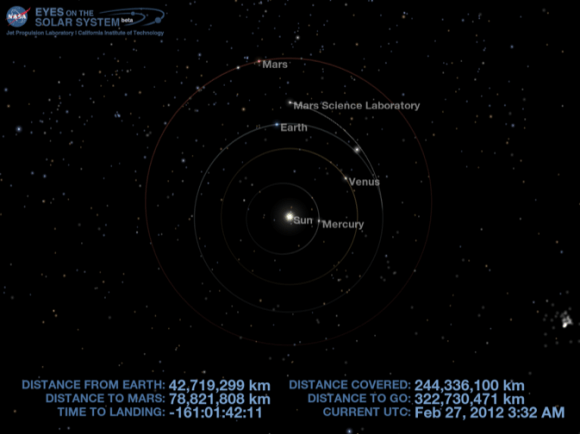
Curiosity will be NASA’s last Mars rover since the 4th generation ExoMars rover due to liftoff in 2018 was just cancelled by the Obama Administration as part of a deep slash to NASA’s Planetary Science budget.

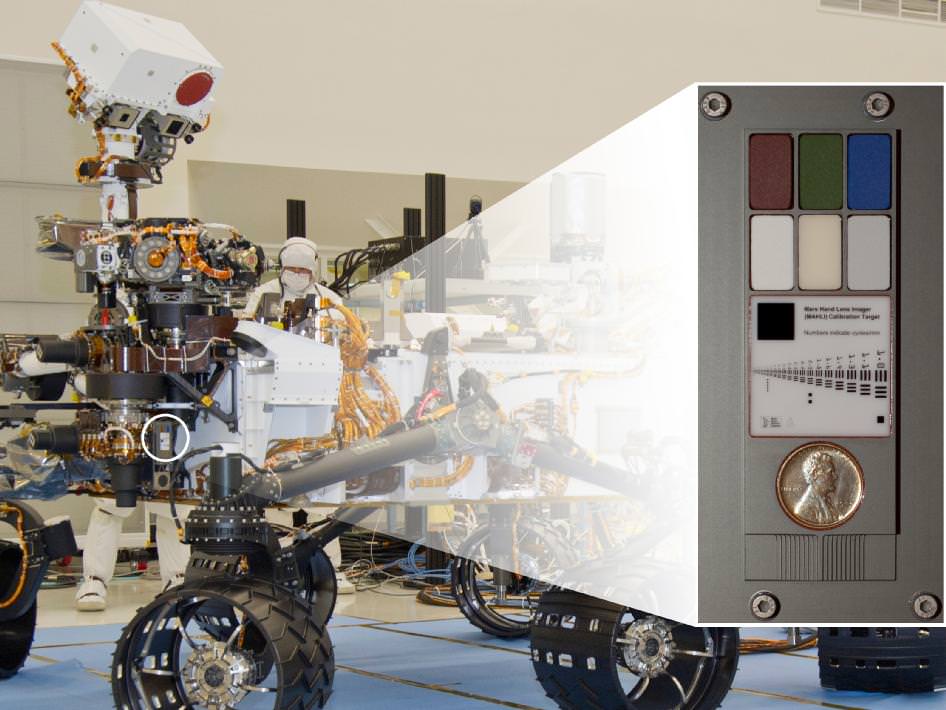
At least we still have curiosity…. but no more missions to Mars seems like a giant step backwards! JUST as things were starting to get exciting too. The cancelled joint NASA/ESA Mars mission really irks me. (Grrrr) In MY book… we can’t afford NOT to go to Mars!
You always have agreeable comments to contribute Aqua4U. Cheers for that. However, some may consider Kramer’s conclusion about Exo-Mars already being cancelled to be mischievous, premature and contradicted by quotes he has included in his recent articles on this topic.
Firstly, the House or Senate could restore Science Mission Directorate (SMD) funding before the budget is signed into law. The Administration’s budget request – where we are at currently – is but an early step in a protracted budget process.
Second, the Europeans have already sunk 200 million Euro into Exo-Mars. So long as they can persuade Russian to donate a Proton launch vehicle to the project, the mission can probably proceed anyway, marking a win for science and relief for the wallets of the generous US taxpayers.
Third, John Grunfeld, NASA’s recently appointed head of the SMD, wants to gear any future Mars missions toward supporting Human Space Flight – presumably this means payloads that actually use the multi-billion dollar $pace Launch $ystem on Mars missions rather than a stream of robotic rovers of the Ed Weiler era.
So perhaps what we are seeing is the beginning of a cultural change in the way Mars science will be carried out – not the end of Mars science.
The problems of transporting people to Mars and back using gravity wells are many and huge. Columbus had considerably less to worry about so unless VASIMR or a similar drive system is quickly developed and nuclear power sources can be transported to space I think Mr Grunfeld won’t live long enough to see his plan come to fruition, and unfortunately neither will I.
I don’t think we can really send astronauts beyond the cis-lunar or Earth-moon region until we employ propulsion techniques beyond chemical rockets. A nuclear powered VASMIR propulsion system is certainly a reasonable proposal. There is of course the whole issue of nuclear safety in space and the like to attend to. However, if we are to send astronauts to Mars we would be best to use high velocity non-Hohman transfer orbits that get them there in a matter of weeks instead of nine months.
LC
So basically you hope for a $pace £aunch $ystem mission?
– C€€rs!
Ha-ha Torbjörn.
With NASAs withdrawal from participation in a number of joint projects (1) the International X-Ray Observatory, (2) the Europa-Jupiter System Mission, (3) the Lisa gravitational wave observatory, (4) probably the ExoMars Trace Gas Orbiter in 2016 and (5) probably the ExoMars rover in 2018, the international perception of NASA as a reliable space partner might not be at an all time high.
Any future NASA/€SA $L$ proposed missions could be boosted by NASA demonstrating some reassuring sticktoitiveness in the meantime.
To this end, since Sen. Bill Nelson and other decision makers have nailed HSF hopes to the $L$ pork extraction vehicle, then at least going through the motions of eventually putting $L$ to use – possibly the SMD’s new direction – might be one way of restoring faith in NASA as an international partner.
Telomere repair is our only hope.
I don’t know how to say this any differently; Obama is dismantling the US. And yes, that sounds political in an election year but no, I’d say that about any president who was doing this kind of damage.
Disqus are thugs and Obama is tearing apart the glory that once was the States. Hm. Sounds more like someone’s got issues. Notice nobody says the democrats or the government, these days…it’s all OBAMA. Yes, he’s single handedly wrecking what he loves…his own country, that made him successful and its president. I think the loss of major space investment is a shame too but at least I admit I don’t know enough about how it all works to lay the blame on one man.
“In mint condition the 1909 Lincoln VDB copper penny has a value of about $20.” In mint condition on mars it has a value of about…
Are you implying that Nasa can use the value of this very unique coin to finance a returntrip to Mars just to collect it?
Im fine with that, as long as they can return to Mars 😛
Now there’s a self-funding X-Prize